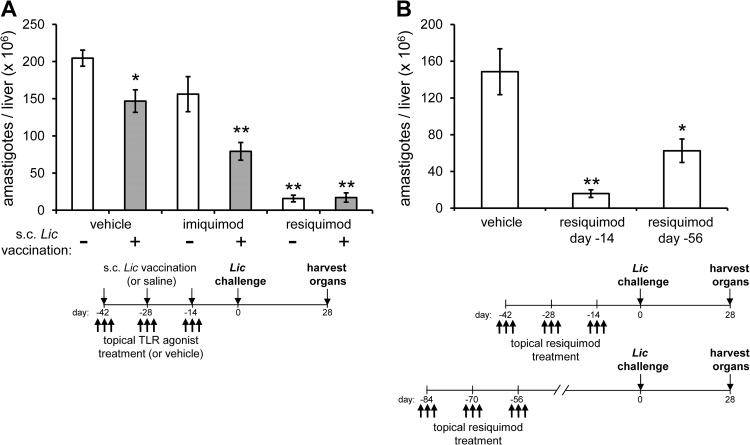FIG 1.
Topical resiquimod treatment prophylactically and durably protects mice against experimental visceral leishmaniasis. (A) Mice were injected subcutaneously with three doses of either saline (no antigen; white bars) or a live L. infantum chagasi vaccine (gray bars), each administered 2 weeks apart. Concurrently, either imiquimod (5% cream), resiquimod (1% cream), or a vehicle cream was applied topically to the shaved dorsal area of mice on the day before, the same day, and the day after vaccination injections. At 14 days after the final vaccination, the mice were intravenously challenged with virulent L. infantum chagasi and euthanized 4 weeks later to assess average parasite burdens in the liver (n = 8 mice per group. (B) Vehicle cream or resiquimod (1% cream) was applied to mice in the absence of vaccination, in three 3-day sets, as before. Mice were challenged with L. infantum chagasi either 14 days or 56 days after the last treatment and then euthanized 4 weeks later (n = 4 to 5 mice/group for each resiquimod group, n = 7 mice/group for vehicle). All results are representative of at least two independent experiments. Error bars denote the standard errors of the means (SEM); all comparisons are to vehicle with no vaccination. *, P < 0.05; **, P < 0.005.

